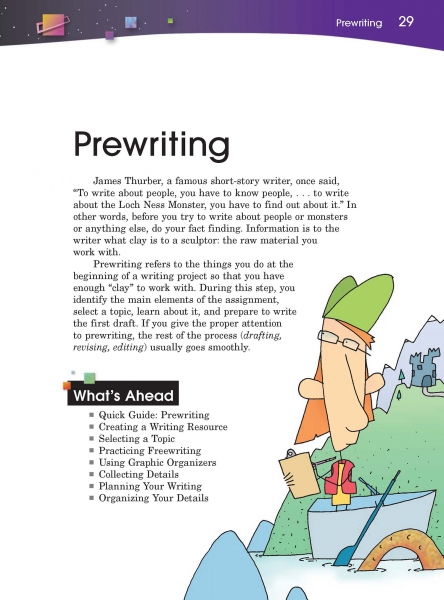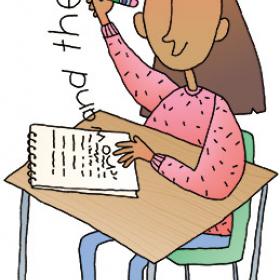Page 029 from

Start-Up Activity
Too often students rush into their writing without taking the necessary prewriting steps. What often results is writing that lacks focus and depth. So be sure to impress upon students the importance of this step in the writing process.
Read aloud the introduction, and then list the main parts of prewriting for discussion. Ask students to share their experiences with prewriting. Some possible discussion questions:
- How do you prepare to write?
- What actions do you take in between receiving a writing assignment and beginning your first draft?
- What are your favorite ways to gather information about a writing topic?
Think About It
“Each of us has individual things that mean something to us, things that no one else is carrying around. That’s a good jumping off point for a story. It’s a place to start.”
—Bruce Degen

Start-Up Activity
Too often students rush into their writing without taking the necessary prewriting steps. What often results is writing that lacks focus and depth. So be sure to impress upon students the importance of this step in the writing process.
Read aloud the introduction, and then list the main parts of prewriting for discussion. Ask students to share their experiences with prewriting. Some possible discussion questions:
- How do you prepare to write?
- What actions do you take in between receiving a writing assignment and beginning your first draft?
- What are your favorite ways to gather information about a writing topic?
Think About It
“Each of us has individual things that mean something to us, things that no one else is carrying around. That’s a good jumping off point for a story. It’s a place to start.”
—Bruce Degen









